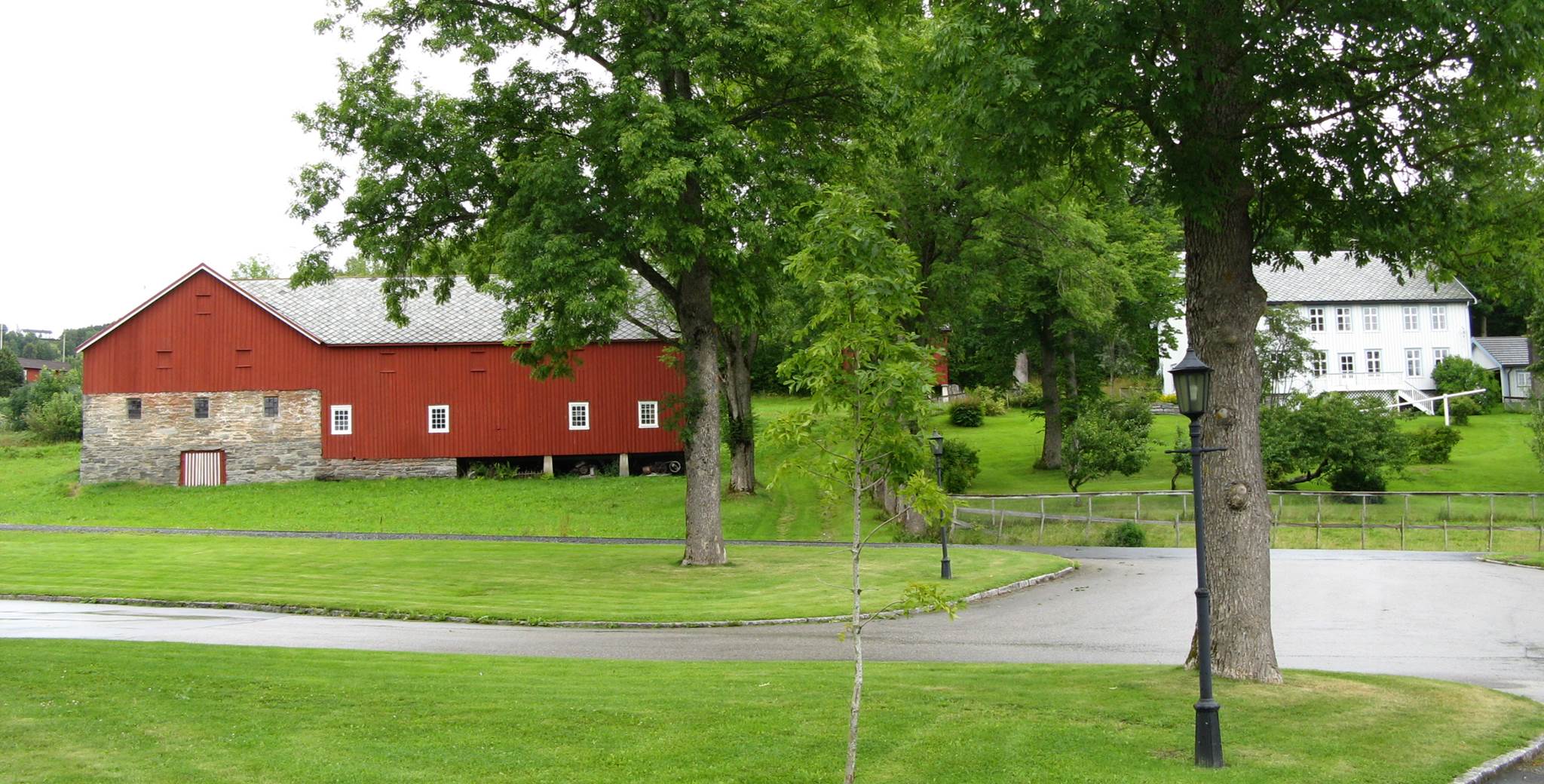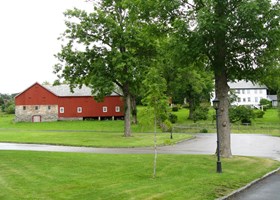

Leksvik, Trøndelag
Owned by the National Trust of Norway since 1982.
Parsonage byre and agricultural museum. The parsonage farm of Lille Røstad and Leksvik church are framed by ash trees planted by the minister's wife Amalie Sofie Wergeland, widow of the famous poet Henrik Wergeland. She arrived here as the minister’s wife in 1850 following her remarriage to the minister Niels Andreas Biørn after Henrik Wergeland’s death in 1845. The main body of the byre, which contains the former stable, was built in 1883 during Carl Ludvig Møller’s time. Kasper Vinge from Leksvik organised the building work. He used local craftsmen for the woodwork, while the stone walls were built by hired craftsmen from Selbu. The craftsmanship was of a particularly high quality. The walls are as beautiful and straight today as on the day they were built. In 1979–1980, it was decided that the barn and byre were to be torn down. This was not public knowledge until the Ministry of Education and Church Affairs ran into problems in connection with the demolition and promised whoever could do the job 20,000 Norwegian kroner and the stone to boot. Eager takers expressed their interest, but the offer also triggered a fight to protect the building.
Things to do in the area. The municipalities of Leksvik and Rissa merged into Indre Fosen municipality in 2018. The municipality is located on the Fosen peninsula, across the fjord from the city of Trondheim. This is an area with deep historical roots and a wide range of culture and nature experiences. Reinskloster, which is also owned by the National Trust of Norway, is found in this area.
Source: En reise gjennom norsk byggekunst, ed. Terje Forseth. National Trust of Norway, 1994.
Opening hours
Ticket prices
Visit us
Prestegårdsvegen7120 Leksvik


 Mail
Mail